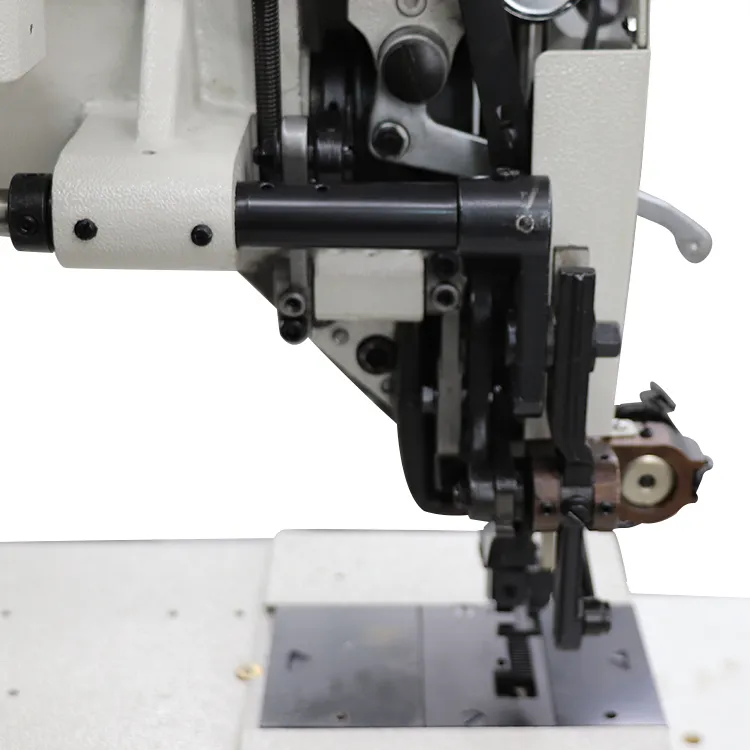Sewing Techniques for Durable Lifting Belts and Their Importance in Safety
The Art of Lifting Belt Sewing Craftsmanship and Durability
In the world of weightlifting and strength training, the importance of proper gear cannot be overstated. Among the essential equipment, lifting belts play a critical role in providing support and stability to athletes during heavy lifts. However, the effectiveness of these belts often hinges on their construction, particularly the sewing process. This article delves into the nuances of lifting belt sewing, highlighting the significance of craftsmanship and durability.
Understanding Lifting Belts
Lifting belts are designed to enhance performance and safety by increasing intra-abdominal pressure, which stabilizes the spine. They come in various materials such as leather, synthetic leather, and nylon, each offering unique benefits. However, the functionality of a lifting belt is heavily influenced by the quality of its stitching. This is where the art of lifting belt sewing comes into play.
The Sewing Process
Sewing a lifting belt is not merely about stitching two pieces of material together; it is a meticulous process that demands precision, skill, and attention to detail. The initial step involves selecting the right materials. High-quality fabrics and threads that can withstand the immense forces generated during weightlifting are essential. Common materials used include heavy-duty nylon and leather, both known for their strength and durability.
Once the materials have been chosen, the cutting process begins. This requires careful measurement to ensure that the belt fits correctly. An improperly sized belt not only reduces effectiveness but can also pose a safety risk. After cutting, the pieces are prepared for sewing. This can involve reinforcing the edges to prevent fraying and ensuring the seams are sturdy enough to handle the rigorous demands of weightlifting.
The Techniques of Sewing
Various sewing techniques are employed in the production of lifting belts, with each contributing to the belt's overall integrity and performance. Double stitching is a common method used to provide extra strength. This technique involves sewing over the same line twice, essentially amplifying the seam's resistance to tearing under pressure.
lifting belt sewing

Moreover, using specialized threads, such as bonded nylon or polyester, enhances durability. These threads are resistant to abrasion and offer excellent tensile strength, ensuring that the seams do not fail, even during the most demanding lifts. Additionally, box X stitching is often utilized at critical points, such as where the buckle attaches, to ensure that these high-stress areas can endure repeated tension.
Quality Control and Testing
Quality control is paramount in the production of lifting belts. After sewing, each belt undergoes rigorous testing to ensure it meets safety and performance standards. This can include stress tests to evaluate the strength of the seams and overall construction. Manufacturers often implement a thorough inspection process to check for defects and ensure that the belts are free from weak spots that could compromise performance.
Once a belt passes these quality checks, it is ready for the market. Athletes and fitness enthusiasts are increasingly aware of the craftsmanship behind their equipment. A well-constructed lifting belt can make a significant difference in performance and safety, leading many to prioritize high-quality products over cheaper alternatives.
The Impact of Customization
In addition to standard lifting belts, many athletes seek customized options tailored to their specific needs. Custom lifting belts can feature personalized designs, colors, and sizes. The sewing process for these bespoke items demands even greater skill and precision, as each piece is crafted to meet individual specifications. This personalization enhances not only the aesthetic appeal but also the fit and comfort of the belt, ultimately contributing to better performance.
Conclusion
Lifting belt sewing is an art that combines skill, precision, and an understanding of material science. Every stitch counts in the pursuit of providing athletes with the support they need to lift heavier and safer. As the fitness industry continues to evolve, the significance of high-quality lifting belts becomes ever more apparent. Investing in a well-constructed lifting belt is, therefore, an investment in one’s fitness journey, underscoring the importance of craftsmanship in the world of sport. Whether you are a seasoned athlete or a beginner, recognizing the crucial role of lifting belt sewing can not only enhance your performance but also safeguard your physical wellbeing.
-
Heavy Duty Leather Sewing Machine: A Must-Have for Professional LeatherworkNewsMay.28,2025
-
Leather Sewing Machine: Essential for High-Quality LeathercraftNewsMay.28,2025
-
Extra Heavy Duty Sewing Machine for Premium Leather ApplicationsNewsMay.28,2025
-
Walking Foot Cylinder Arm Sewing Machine: Precision and Power CombinedNewsMay.28,2025
-
Industrial Cylinder Arm Sewing Machine: Engineered for High-Performance StitchingNewsMay.28,2025
-
Cylinder Bed Sewing Machine: A Powerful Solution for Precision StitchingNewsMay.28,2025
-
Zigzag Sewing MachineNewsMay.12,2025





























